Realistic Console Racer Soup: Two Parts Forza, One Part Project CARS
Imagine racing in stunning 60FPS on one of the world’s most storied and important circuits, the Circuit de la Sarthe or more popularly known by its location and iconic 24-hour race, Le Mans. The immense straight leading to the Mulsanne Corner is not only one of the fastest places on any racetrack in the world, it’s also a part of history, including the spectacular and horrifying aerial acrobatics of the Mercedes-Benz CLR-GT1s at the 1999 running of the 24-hours at Le Mans 1. In short, the Le Mans experience is one of the things car and racing enthusiasts buy video games to feel.
Imagine then that you’re powering down that Mulsanne Straight in a modern GT racecar when you notice that the first place driver, in the same sort of car, has inconceivably pulled away from you and the other drivers. It’s an oddity, you think, and drive hard to catch that position and win. The course map and the race results reveal that the first place driver was lapping 17 full seconds a lap faster than the next fastest driver. It’s problem of some sort, a glitch, in Forza Motorsport 6, and it’s one of the ludic components that belay it’s ostensible purpose and gamers’ ability to experience and enjoy events like the 24-hours at Le Mans.
In other words, and as argued here, this problem and others show odd incongruities in Forza’s practice and Turn 10’s stated goals. Racing game and other game developers would be smart to pay attention to these incongruities and how they impact player experiences.
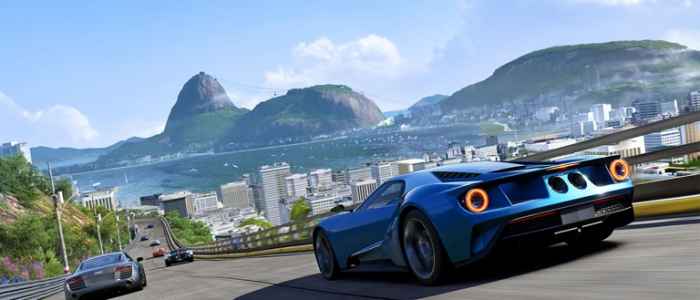
A Brief History
Car racing games are console staples. They are generally discussed in a simulation-arcade binary, based on a game’s handling and difficulty realism, and we might argue that this binary was popularized with Gran Turismo for the former and Outrun or the original Need for Speed for the latter. Forza Motorsport launched for the original Xbox in 2005, and positioned Microsoft and the Xbox to challenge a dominant Sony PlayStation 2 and Gran Turismo franchise (Gran Turismo 4 launched in the US in 2005).
Microsoft’s Turn 10 Studios and Sony’s Polyphony Digital pushed each other and fans into evolving boasts and debates about automotive realism on consoles. Major points of contention included (and continue to include) night racing, authentic AI, engine sounds, cockpit cameras, car selection, handling models, graphics, and more. Polyphony touts the GT Academy—a competition between GT gamers that includes real-world race-driver training and the possibility to join a race team—as its primary link between the Gran Turismo games and the real world of racing and car dynamics. It was a major cultural clash about this staple genre for console gaming, one that even attracted attention from magazines like Car & Driver 2.
Yet while the Gran Turismo games continue to be one of Sony’s most successful brands, the Polyphony team is unequivocally slower than Turn 10 to develop its games. Gran Turismo 5 (GT5) launched in 2010 (5 years after GT4), GT6 in 2013, and GT7 doesn’t currently have a tentative or projected release date (and based on the lack of information about the game, won’t have anything ready for 2016). Conversely, Forza 4 hit markets on Xbox 360 in 2011, Forza 5 was a launch game for the Xbox One in 2013, and Forza 6 has been available since September 15.
There’s likely a critical shift in this console racing game dynamic, then, as Sony is no longer directly supporting a realistic racing alternative to Microsoft and Forza. Playstation 4 owners have essentially had Need for Speed Rivals (2013), Driveclub (2014), and Project CARS (2015) from which to choose. Of those games, and any others that depict real street and/or race cars on PS4, only Driveclub is exclusive, and that game is undeniably different from the sort of games Forza and Gran Turismo are. If you want to drive a VW R32, a Toyota Supra, a Ferrari F12, or a modern GT car on the Circuit de la Sarthe, on a current-generation console, you have only one option—the Xbox One and Forza.
That Realism Problem
In Forza’s “October Content Update” on October 5, players read, “We continue to investigate issues involving inconsistency in Drivatar behaviors during Forza Motorsport 6 races; namely several Drivatars pulling away from the rest of the pack” (Brian Ekberg 3). Players who have experienced this “pulling away” might laugh. In my own experience, the Drivatars don’t pull away, they scorch the earth with unseen nitro blasts and unyielding grip; they’re clearly broken, defying physics, the difficulty setting, or both. This problem prompts scrutiny of the game more broadly, and many have already started those discussions in reviews and in online forums and in living rooms (and it’s one that Turn 10 has indirectly acknowledged and patched 4, while not acknowledging the others). But this is not an argument for dismantling the Drivatar system or including more of this or that car type. Instead the argument is about the ostensible goal of Forza 6 and how effective it’s ludic elements are at achieving that goal.
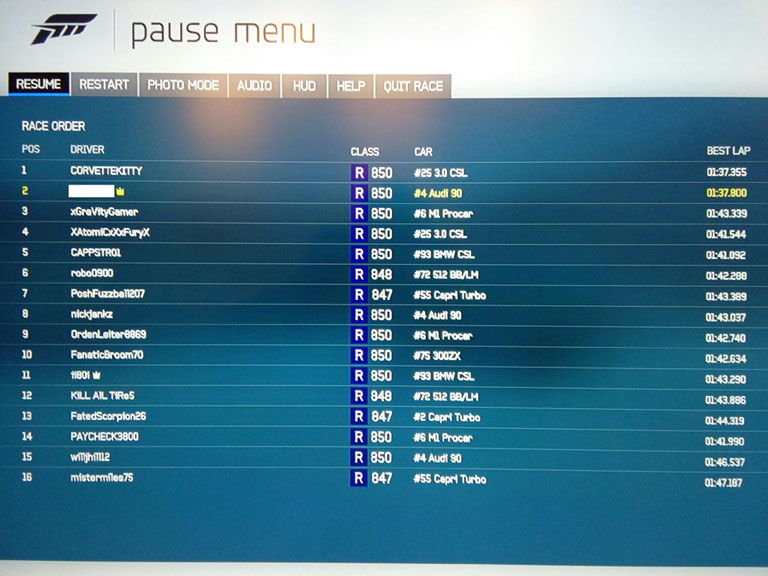
Again, Forza 6 touts realism, particularly through it’s advocate and longtime mouthpiece Dan Greenawalt, creative director at Turn 10 Studios 5. Over the past few years, Greenawalt has toured E3 and Gamescom and other notable gamer hubs offering interviews and sound bites that focus on Turn 10’s goals of offering players the cars they want to drive and choice in how they drive them, on realistic tire deformation physics through collaboration with Pirelli, on partnering with Top Gear, on the carefully curated selection of deeply significant vintage and modern cars, on the most authentic night and rain experiences, replete with treacherous on-track puddles, and more.
One can push the difficulty sliders around in Forza 6 to mostly make racing simple, and there are still a wide range of things to do in the game that don’t have anything to do with conventional racing. We might all applaud Turn 10 for developing a single, shared place for creative people who love to paint, replicate intricate racing liveries, fine tune a car’s dynamics, play automotive tag, race against a digital Stig, climb lap-time leaderboards, and more. Turn 10 also adds “mods,” which suggest alchemy to give you +6% grip, in one example, or dare you to win races under certain restrictions, or offer credit bonuses for drafting or clipping corner apexes. Some of the choice-based ludic elements seem to contrast the realism-based elements, but the joy in Forza 6 is how that proverbial slider allows the player to move from one to the other.

Even so, there are fundamental problems with Turn 10’s realism claim, even if the sounds of that Nissan R34 GT-R are digitally captured and if its tires behave as they should in the wet, according to Pirelli. It could be claimed that first and foremost is the incessant and unrealistic starting grid. Some players may want to always start in 14th spot, but it’s reasonable to challenge the racing fans at Turn 10 to give an example of a racing series that doesn’t include practice and qualifying sessions to determine the starting grid. In the hundreds of offline races you must undertake to complete Forza 6, you’re compelled to elbow your way through that pack of more than a dozen racers ahead of you, and today at least, often only to find yourself in a white-knuckle frenzy to catch a first-place Drivatar who is lapping 50% faster than anyone else. No qualifying is problematic because it’s inauthentic, but also because it ends up feeling like Turn 10’s throwing in an unnecessary grind.
Second, despite all the freedom and the ways to earn credits in Forza 6 (e.g., players downloading your design/livery), racing payouts are linked to position. The incentive is maximum credit payout, and thus players scramble for 1st. There isn’t any particular reason or practice based in reality for this ludic and design choice.
Racing championships are determined by points earned in practice, qualifying, and racing, and while championship standing is related to revenues, fans don’t follow the DTM or F1 or NASCAR because the winners of the races are handed Publisher’s-Clearing-House-sized checks. Indeed, something that choice ignores is that often the true intensity, best racing, and most fun is in the three-way dogfight for 9th or the final-lap battle for 3rd or the frantic jousting for that last points-paying spot and a future in the championship. What happens now is that players’ Drivatars are logged as they crash through a horde of slower cars to get to 1st, which in turn, create Drivatars who are far more desperate and aggressive than we see in real racing scenarios. The 1st-place payout is problematic, then, because it forces players to race with one goal rather than to relish in the many dynamic (and fun) things that happen in racing.
Third, one of the Gran Turismo games had “Drive Your Car” emblazoned on the cover, and the ability to drive and customize a host of real street cars is undoubtedly one of the reasons Gran Turismo and other racing games are popular and successful. Automobile manufacturers have shown correlations between game sales, brand identity, and actual car sales. There’s something about driving a car you know (i.e., as opposed to something you’ve never seen or that doesn’t exist).
For many gamers, the heart of Forza 6 (and games like it) is street cars. No doubt many of us also enjoy racecars, but drifting a Cadillac limousine or playing tag in a Jeep Wrangler involve different priorities than do setting hot laps in an Aston Martin or Lotus F1. While Forza 6 does a reasonable job at keeping these players in different places and, at least in the career mode, at keeping the cars in era and purpose groups, the game has problems when the cars overlap in Forza 6‘s “class” metric. Outside of career, an Australian V8 Supercar, a Dodge Viper, a BTCC racer, and a Formula E open-wheel racer might all join in an “S” class race. The “S” and “R” classes are where purpose-build racecars share some performance characteristics with some of the most exotic supercars, but that doesn’t mean that anyone wants to race them together (in fact, the online message boards suggest just the opposite; note, since writing this article, Turn 10 has added “car divisions” to Free Play 6).
I’m certainly not alone in wishing all of the “A” class races didn’t include a glut of “track toys,” like the utterly ubiquitous and tedious BAC Mono. Worse, this is a problem because it is perhaps the most visible affront to Turn 10’s rhetoric about realism.
Comparisons
Of note, some of the problems I detail above are curiously addressed by other games. Turn 10’s own Forza Horizon 2 offers players an expansive and liberal freedom that’s coupled with a reasonable lightening of the claims to realism (particularly physics authenticity). In that game, as in many arcade racers, the charge from last to first makes some ludic and narrative sense. A major difference between Horizon 2, November’s Need for Speed, and similar games—with “Forza Motorsport” and more realistic/sim games—is that the arcade racers are almost always focused on street racing and other impromptu and unsanctioned racing. But when focused on formal racing on laser-scanned, real-world racetracks, and in real-world racing championships, the three problems above glare back.
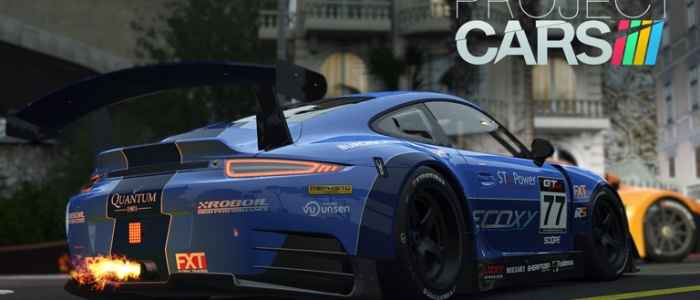
The most important counterpoint to Forza 6 must be Project CARS. Released on consoles and PC in May of this year, Project CARS evokes the extreme simulation end of the simulation-arcade spectrum. What the game gets right is stunning, given Slightly Mad Studios size and funding relative to Turn 10’s and Microsoft’s. Slightly Mad sells Project CARS as a grassroots, crowd-funded initiative from people who deeply love and understand racing. Regardless of being notably and reasonably short of Forza 6 in some areas, the core ludic decisions Slightly Mad made are comprehensively superior to some of those Turn 10 made that led to the problems above.
Turn 10 and fans tout the visual superiority of Forza 6‘s night and rain, and Greenawalt and others remark about the physics integrity in track surfaces and puddles and whatnot. Yet Project CARS offers fully dynamic weather and day-night cycles. While Forza 6 may look prettier, the player can trade that contentious beauty for more important freedoms—for instance, in Project CARS, you can actually run the 24-hours of Le Mans, in real time, with dynamic weather, day-night cycling, and a field of championship-specific cars and classes. Further, in preparation for that race, Project CARS includes practice and qualifying sessions, and those sessions (and the races) follow what the championships actually do (e.g., some use two practice sessions, allot points for fastest practice lap, have a sprint and full race, etc.).
Challenging players to craft experiences they want, Project CARS also eschews Forza 6‘s reliance on the 1st place incentive. There are no credits to grind for or cars to unlock in Project CARS, an excellent and refreshing decision and one that gamers who have for years played lap after lap to unlock the best cars will love, and the game even allows you to layer the challenge and experience by choosing your starting grid position. There are no Drivatars or Drivatar “pulling away” problems in Project CARS (e.g., conceding an infrequent qualifying glitch on consoles), and the AI is determined on an intuitive 0-100-point slider. Again, since there is no direct incentive to fight for 1st in every race, the player is instead incentivised to identify competitive AI. The thinking and authenticity from Slightly Mad underscores the problems in Forza 6. Even without Drivatars, Forza 6‘s Showcase Events and other offline content evoke the worst of racing game grinding and of Forza‘s AI problems—there are plenty of discussion boards filled with vitriol for AI fictional driver M.Rossi, for instance.
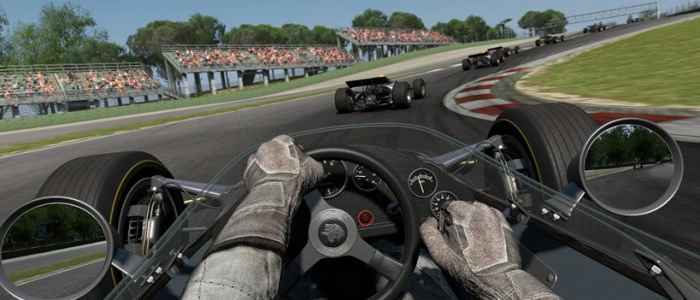
Solutions?
Turn 10, and other studios developing upcoming racing games, would be doing itself and gamers a massive disservice through inattention to these problems and the solutions on offer from Project CARS. Indeed, many of the ludic, ideological, and structural decisions Slightly Mad made seem to be parallel to Greenawalt’s and Turn 10’s rhetoric. And that’s crucial. Forza 6 uses an absurd “distance” indicator (e.g., 1050ft.) to keep the player informed about his/her position relative to other drivers, while Project CARS and any other tenable racing game uses what is used in real-world racing—split times. It only makes sense that Turn 10 would see that difference and change Forza games to align with Turn 10’s and other games’ representations of reality.
Make no mistake. Forza 6 is a far more comprehensive product than is Project CARS; the car roster alone highlights a serious trump for Forza 6. Yet with the PC-sim-based Assetto Corsa arriving on consoles next year, Project CARS 2 in production, and Gran Turismo 7 no doubt somewhere on the horizon before 2020, Turn 10 would do well to shore up its realism and to start by addressing the above problems. The easiest changes, something that surely could be done in a patch, would be to change the credit incentive by dramatically increasing the payout for clean racing and to add a “type” or “championship” option to further distinguish cars entering races. After all, despite what the BTCC and NASCAR might suggest, professional racing is not a demolition derby, and that’s not what console gamers want out of the simulation side of this crucial genre staple—racing.
Works Cited
- www.youtube.com/watch?v=Ow3rxq7U1mA#t=41 ↩
- www.caranddriver.com/features/gran-turismo-5-vs-forza-motorsport-3-feature ↩
- www.forzamotorsport.net/en-us/news/fm6_october_content_update ↩
- www.forzamotorsport.net/en-us/news/fm6_december_content_update ↩
- www.wired.com/2015/06/forza-6-videogame-racing-gets-realistic-ever/ ↩
- www.forzamotorsport.net/en-us/news/fm6_december_content_update ↩
What do you think? Leave a comment.





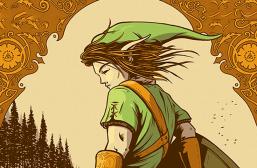

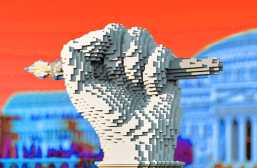



If you want to play a game with the best racing game graphics and visuals, best car sounds, best rain mode, best DLC offering, photo realism you buy DriveClub. If you want to have the handling of a real life car, buy Assetto Corsa. Project CARS to me doesn´t really give me the fizz. I did play the alpha for a while and my thoughts are that the cars have too much grip. You rarely get oversteer.
Great read.
I have played many a sim and many a racing game, and can tell the difference fairly easily. While project cars has many features and details that aid in the sim feel and physics, What it doesnt get right is the traction of the cars. It feels like most of the cars are on rails to the point where having 600hp in a mustang doesnt even make the tires slip up on corners which is just downright ridiculous. You can literally blow over the sidebumpers of the track at 135mph and have no effect on your steering or the car whatsover.
On a similar note, the damage is extremely unrealistic and multiplayer is really just a shitshow because of all the little kids and jerks who don’t ever use their brakes for corners and go 150mph into the corner only to wreck those who took the corner smartly and cause a humongous pileup. I would call this a racing game, not a sim. Still miles ahead of most racing titles, and nowhere near as bad as Need for Speed. Forza 5 or assetto corsa remain the top dogs in racing sims, at least until forza 6 comes out.
Forza still king of racing games.
Well-researched and written. Nice job!
Love PCars game, it really needs fully licensed race series though. project cars with the DTM license would be heaven.
The game is definitely beautiful and the cars handle solid, though the physics are better in Assetto Corsa. The framerate drop that occurs from the rain is insane though. I’m running the game at triple screen (720p), getting well over 90 fps with everything on ultra, ds2x smaa ultra. With rain, it drops to almost 50fps. Additionally, the adjustments required to make the game operational with triple screen set-ups flat out sucks. Though I did adjust the camera, I still feel as though the depth could be a little better. Also, the helmet visibility in helmet cam is virtually nonexistent. This is something that should have been ironed out by now (it’s June 23rd) considering the game is hyped to be the best driving simulator around. Even at 720p it is the best looking simulation I’ve played thus far. AC is solid with mods and has its moments but I feel CARS is slightly better looking. But when it comes down to authenticity, AC is still king; plus it runs in triple screen flawlessly.
Like most other racing games and, what are considered, ‘simulators’, the physics engine results, in a far too twitchy feel to the cars. I’ve always preferred the weighted feel to cars, one could only rarely experience in the racing genre. The original Need for Speed is an example.
Respect to all car gamers.
I really like Project CARS but I’ll stick with the Gran Truismo series for the simple fact of upgradability. Gran Truismo by far has the most realistic and variety of upgrades for cars, which this game cannot match. Coming from a hot rodder and R/C er’s perspective that is one of the most important things in a racing game.
Glad you wrote this
After being spoiled by the visuals of DriveClub, I find that every racing game fails in comparison. Others are fun but can’t hold themselves with the visuals.
Incredibly well written and full of detail. At the end of the day it’s about the fun. For my money Forza is simply more enjoyable, faults and all.
Fantastic read. The first time I played Project Cars, I felt like it was a step forward for the genre; not for graphical detail, or vehicle physics, or any of its technical achievements, but for game design. We’ve been conditioned, as gamers, to race for first place and the material prizes that come with it, rather than the thrill of racing alone. I love the point SlightlyMad made with Project Cars: that the satisfaction of a hard-fought win, or an epic battle for any position should be rewarding in and of themselves. It’s truly progressive thinking for a genre that only ever tries to be prettier, smoother, and increasingly realistic. When it comes to sim racers, it always seems to be about more, rather than necessarily better. And I love that we’re finally bucking that trend.
I like the comparative nature of the article that you have put forth. I only wish that you included more sources for Turn 10, in addition to the Forza 6 material.
The ideal racing game would have elements of various games that stand out in the genre. The free roam, sandbox style of Test Drive Unlimited and Forza Horizon is an example.